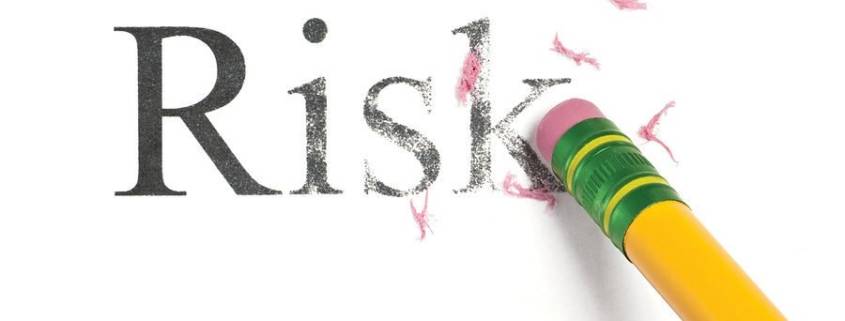I work with high risk businesses every day, and sometimes, when I think I’ve seen it all, something new comes around to surprise me.
Many large construction projects will use a “Wrap” or an “OCIP/CCIP” (For more info on what this is, click here) for coverage. When many contractors get enrolled in these Wrap Programs, they often feel that they’re using someone else’s insurance and what happens on the site can never affect them. That couldn’t be farther from the truth.
Workers’ Compensation
First, let’s discuss the easy one, Workers’ Compensation. Even though it is true that any claims for that project will not show up on your policy Loss Runs, it actually does get reported to your Workers’ Compensation bureau (either state [NY, NJ] or national [NCCI]). The project payroll does this as well in order to calculate your business’s Experience Modification Factor (sometimes referred to as EMR). What this means is that all of your claims are being calculated for your personal experience rating, which will factor in surcharges or credits on any Workers’ Compensation policy you have inside or outside of your private policy.
What to do?
You need to manage your wrap claims and payrolls the same way you should manage them on your private policy. You need to pull loss runs frequently and you need to manage your claims daily. You also need to manage the adjusters at these carriers regularly, so that the dollars being spent are being monitored – just as you would the checks from your checkbook. Because, as most companies have come to realize, Workers’ Compensation is similar to a high interest credit line. Whatever the carrier pays out on your behalf, you pay back with interest. For more info on how to manage your claims inside your business, click here.
General Liability & Excess
So, generally speaking, if something happens on the jobsite (physical damage, accident, fire, lawsuits, etc.) the Wrap’s General Liability and Excess policies will cover you and your company, and defend you in the process by paying any settlements or claims. However, that factor comes into question under a number of circumstances, where the General Contractor’s or Property Owner’s Insurance company looks to implead against you, the trade contractor that enrolled in the Wrap to perform your work.
Why would they do that?
Well a wise person told me a long time ago, “Insurance is not about what it does cover, but what it doesn’t.” Insurance companies are in the business to make money, not pay claims. If they see an opportunity to push a claim to you, they invariably will!
How can they do that?
There are a number of circumstances that could allow these insurance carriers to implead claims over to you, and get them outside of their policy and onto yours. Oh, and by the way, if you didn’t set up your policies properly, your insurance company may not cover you either, and you’ll have to pay these claims out of pocket. Isn’t that crazy?
Here’s an example:
You are working on a project that includes moving equipment or material around the site (as most do), then you have to unload your materials/equipment so that you can use them. Sometimes, it’s clearly not your responsibility to move them. But what about when you have to take them off of a truck and load them into the elevator and get them where you’re going to use them? Or what about if they were going to be used on the ground? Well, here lies an issue that most people don’t know.
Auto coverage is almost always excluded from the Wrap, so when the vehicle is moving around the site, it’s covered by the insurer of the vehicle or the operator of the vehicle. However, what about someone who gets injured during the loading and unloading of the materials? Well, the injury/medical coverage/lost wages would be covered under Workers’ Comp (in NY especially), but what if the injured employee sues for negligence? Or seeks protection under Labor Law 240/241 in New York? The Wrap can implead this claim back to your company and you have to find coverage inside your own policy: General Liability, Auto, Excess, etc. Additionally, you have to hope that you set up your policies properly when you bound them and/or when you started this project, which most companies DO NOT.
Takeaways & Conclusions
First, you need to consult a Risk Manager to be sure that you’ve aligned your coverages and risk strategies properly before you start a Wrap Project. Next, you need to enact a risk management strategy to both avoid and manage your claims, so they don’t spiral out of control. Lastly, be sure that your Risk Management strategy includes consulting a Construction Litigation Specialist, to be sure that you’re not missing important details that could put you out of business. For more info on how to enact a Risk Management Strategy and manage these challenges inside your business, click here.
**As it relates to this type of incident, after researching this issue a bit, the real question is whether this type of loss is a Commercial General Liability Loss (in which case it would stay in the wrap), or a Business Auto Loss (in which case it doesn’t).
These kinds of policies are generally supposed to be mirror images of each other so that no claim is covered on both. There are a lot of different cases discussing various situations, but the general rule seems to be that any accident involving loading or unloading of an auto will be covered on the automobile policy. See, e.g. Paul M. Maintenance, Inc. v. Transcontinental Insurance Company, 300 AD2d 209 [1st Dept. 2002].
Some cases impose an additional requirement that an unloading accident was connected to the “negligent use” of a motor vehicle for that accident to be covered under an auto policy, ABC, Inc., v. Countrywide Ins. Co., 308 AD 2d 309 [1st Dept. 2003].




 Photo by Ilya Pavlov on Unsplash
Photo by Ilya Pavlov on Unsplash  Photo by Clark Young on Unsplash
Photo by Clark Young on Unsplash 

